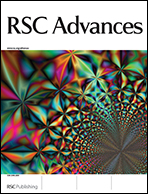Influence of the nature and concentration of precursor metal ions in the brucite layer of LDHs for phosphate adsorption – a review
Abstract
Layered double hydroxides (LDHs) are an important class of layered materials consisting of hydroxides of some of the most common and abundant metals on Earth. In addition to compositional flexibility, these materials are good anion exchangers and are important sinks for environmental contaminants. In this article, we review the past achievements of LDHs concerning their synthesis, structural development, characterization, and especially the removal of phosphate from aqueous solution. Major factors such as the nature and concentration of LDH precursor metals, layer charge and interlayer anion charge, competitive anions, pH, temperature, etc. for phosphate removal are discussed. Additionally, the possible phosphate removal mechanisms by LDHs are also discussed to know the efficacy of the materials. The phosphate removal capacities of LDHs are compared with other materials for accessing the future prospects of LDHs. The possible improvement of LDHs in terms of stability, regeneration and reusability are also proposed for cost effective applications.


 Please wait while we load your content...
Please wait while we load your content...